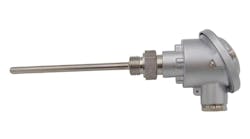Greetings from the cool city of Pune, India. I just read John Rezabek’s column, “Watson, do we need you?” (Aug ’19, p. 22). It's a really wonderful piece of writing on a tech subject like simulation. We rarely come across insertions like “(Hilarious laughter here.)” That's the kind of thing that lets one relax and relish the reading!
Nearly a decade ago, I came across something really remarkable about a “Simulation kit for micro-reactor.” If I can recall correctly, it was from Bayer (Germany). It had building blocks like pump, heat exchanger, etc., useful to carry out tests to rationalize the process through a micro-reactor. It becomes more interesting when you can see the old and new reactor adjacent to each other in the same plant complex—the conventional is 15-20 feet high while the micro-reactor version as small as 15-20 inches for the same capacity/throughput.
Hats off to the technology and the huge effect of exploiting the phenomena of heat exchange from those micro tubes just 1/8-in., 1/16-in. and even 1/32-in. diameter. But I didn’t see any interesting paper on such technologies bringing a massive change to miniaturization. Did you?
Prakash Bapat
[email protected]
Prakash, I'm happy to hear you enjoyed the article. It's amazing that your new “mini” reactor performs as well as the old. We all should be so fortunate.
—John Rezabek
In "Measuring oceans and ice" (July ’19, p. 14), Béla Lipták called the ice at the poles the "air conditioners of the planet" and discussed the methods to measure the rate of their melting. He also mentioned that he's writing a book about applying process control analysis principles to quantify the dynamics of the global warming process. Could he share some of his early conclusions about the time frame of this warming process?
Zoltan Bergmann
[email protected]
It will take a little longer to reliably determine the dynamics of this process, the time constants, gains, inertias and tipping points and the like because data like the rate of the growing emissions from permafrost is hard to come by.
The big picture is this: the energy consumption of mankind has increased some 30-fold during the industrial age. To meet this demand, the fossil and uranium reserves of the planet had to be used. These energy reserves are exhaustible. Even if we accept the consequences of fracking, using oil shale, drilling in Alaska and under the oceans, etc., eventually they will run out.
In a 1999 projection, NASA predicted that by the year 2175, we will run out of fossil deposits. I have no idea if this projection is correct, but I do know that if we keep burning these reserves, they will eventually run out. Therefore, we should learn from our Stone Age ancestors, who stopped using stone not because they ran out of it, but because they were smart and realized that bronze was better. I hope we'll follow their example, and realize that green energy is better.
—Béla Lipták

Leaders relevant to this article:



